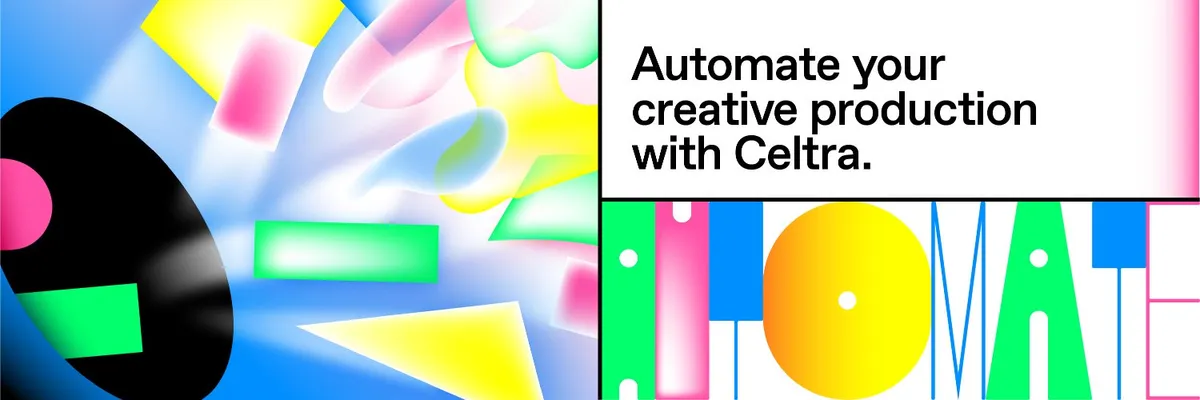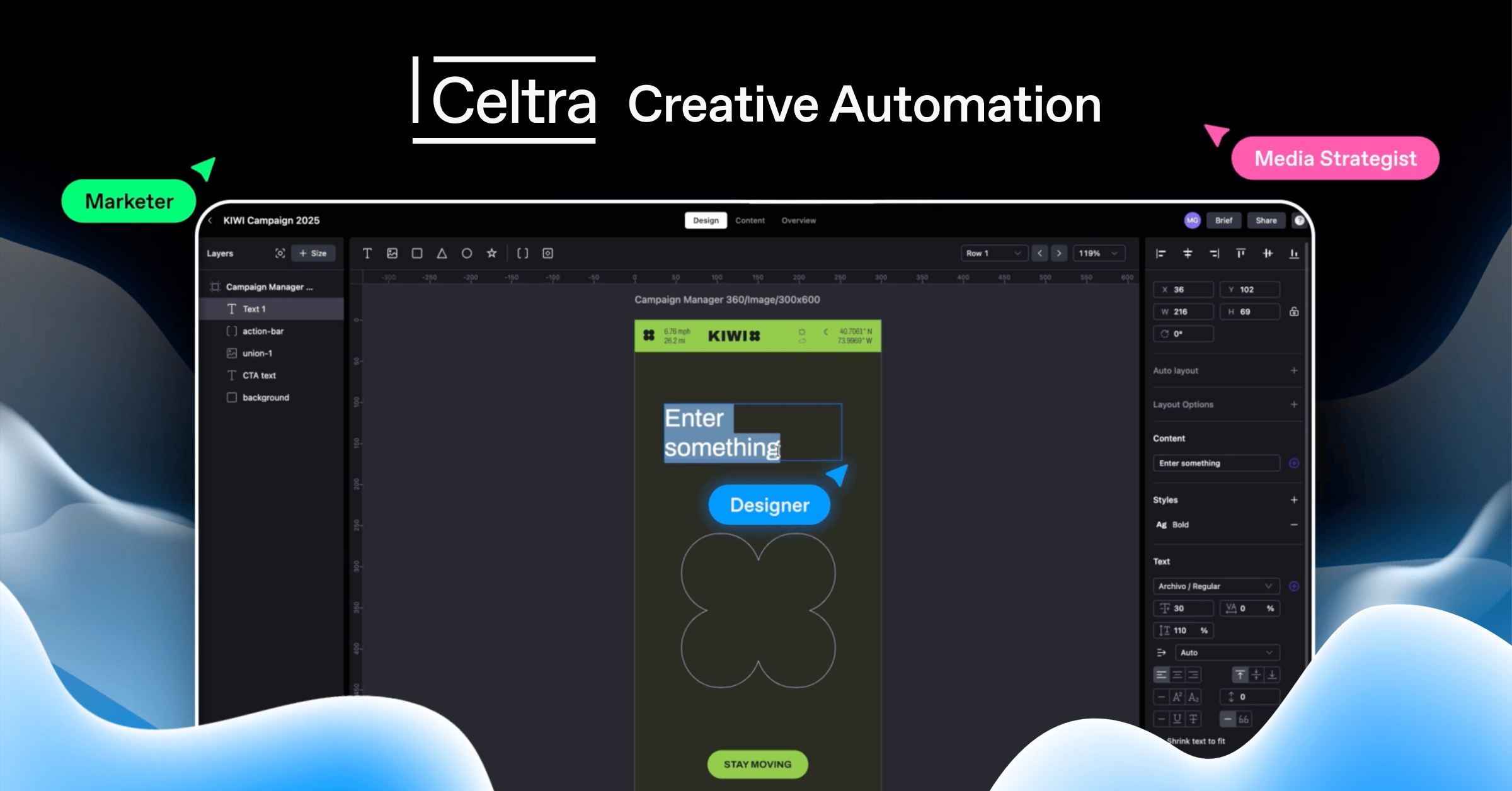
Celtra Creative Automation: Complete Buyer's Guide
Workflow automation specialist for creative adaptation at scale
Celtra Creative Automation is a specialized workflow automation platform designed for media operators and enterprise marketing teams requiring high-volume creative adaptation at scale. It focuses on automated creative adaptation rather than full creative generation, addressing resource bottlenecks through computer vision technology and template-based automation.
Market Position & Maturity
Market Standing
Celtra operates as a specialized workflow automation platform within the competitive creative automation landscape, recognized by Forrester's 2024 Creative AdTech Wave as a workflow automation specialist [48][59].
Company Maturity
The company demonstrates operational maturity through documented enterprise implementations including Unilever's 8-month modular deployment [64] and Nike's large-scale creative variant generation [49].
Growth Trajectory
Market validation appears through customer adoption across diverse industries and company sizes, from mid-market implementations like Mediacorp's 11-week deployment [48] to enterprise-scale rollouts requiring 6-9 month implementation timelines [64].
Industry Recognition
Forrester's 2024 Creative AdTech Wave recognizes Celtra as a workflow automation specialist [48][59].
Strategic Partnerships
The platform's focus on media operator partnerships for shoppable ad integrations [45] suggests strategic positioning within the advertising ecosystem.
Longevity Assessment
Long-term viability appears supported by the platform's specialized focus on workflow automation within the expanding AI advertising market, projected to reach $28.4 billion by 2033 [54].
Proof of Capabilities
Customer Evidence
Nike's deployment generated over 17,000 creative variants with 19.5x higher production efficiency compared to manual processes [49].
Quantified Outcomes
Mediacorp achieved 44% faster creative iteration during an 11-week deployment timeline [48].
Case Study Analysis
Unilever's 8-month modular deployment included structured 'modular design workshops' to address creative team skepticism [64].
Market Validation
Market adoption indicators include diverse customer types from media operators to direct brands, suggesting broad market acceptance of the platform's workflow automation approach.
Competitive Wins
Celtra's computer vision capabilities for auto-cropping provide differentiation from content-generation-focused competitors [51].
Reference Customers
Enterprise customers like Nike and Unilever demonstrate the platform's scalability for complex organizational requirements [49][64].
AI Technology
Celtra's AI capabilities focus on production acceleration through computer vision and machine learning rather than creative ideation.
Architecture
The platform's core technology centers on computer vision algorithms for automatic image cropping and positioning [51].
Primary Competitors
AdCreative.ai, Persado, Adobe Sensei [50][53][65].
Competitive Advantages
Core competitive advantages include computer vision capabilities for automatic image cropping and positioning [51].
Market Positioning
Celtra's differentiation centers on workflow automation specialization rather than comprehensive creative generation.
Win/Loss Scenarios
Win scenarios favor Celtra when organizations require high-volume creative adaptation and workflow automation takes priority over creative generation.
Key Features

Pros & Cons
Use Cases
Pricing
Featured In Articles
Comprehensive analysis of AI Digital Ad Design for AI Marketing & Advertising for AI Marketing & Advertising professionals. Expert evaluation of features, pricing, and implementation.
How We Researched This Guide
About This Guide: This comprehensive analysis is based on extensive competitive intelligence and real-world implementation data from leading AI vendors. StayModern updates this guide quarterly to reflect market developments and vendor performance changes.
67+ verified sources per analysis including official documentation, customer reviews, analyst reports, and industry publications.
- • Vendor documentation & whitepapers
- • Customer testimonials & case studies
- • Third-party analyst assessments
- • Industry benchmarking reports
Standardized assessment framework across 8 key dimensions for objective comparison.
- • Technology capabilities & architecture
- • Market position & customer evidence
- • Implementation experience & support
- • Pricing value & competitive position
Research is refreshed every 90 days to capture market changes and new vendor capabilities.
- • New product releases & features
- • Market positioning changes
- • Customer feedback integration
- • Competitive landscape shifts
Every claim is source-linked with direct citations to original materials for verification.
- • Clickable citation links
- • Original source attribution
- • Date stamps for currency
- • Quality score validation
Analysis follows systematic research protocols with consistent evaluation frameworks.
- • Standardized assessment criteria
- • Multi-source verification process
- • Consistent evaluation methodology
- • Quality assurance protocols
Buyer-focused analysis with transparent methodology and factual accuracy commitment.
- • Objective comparative analysis
- • Transparent research methodology
- • Factual accuracy commitment
- • Continuous quality improvement
Quality Commitment: If you find any inaccuracies in our analysis on this page, please contact us at research@staymodern.ai. We're committed to maintaining the highest standards of research integrity and will investigate and correct any issues promptly.